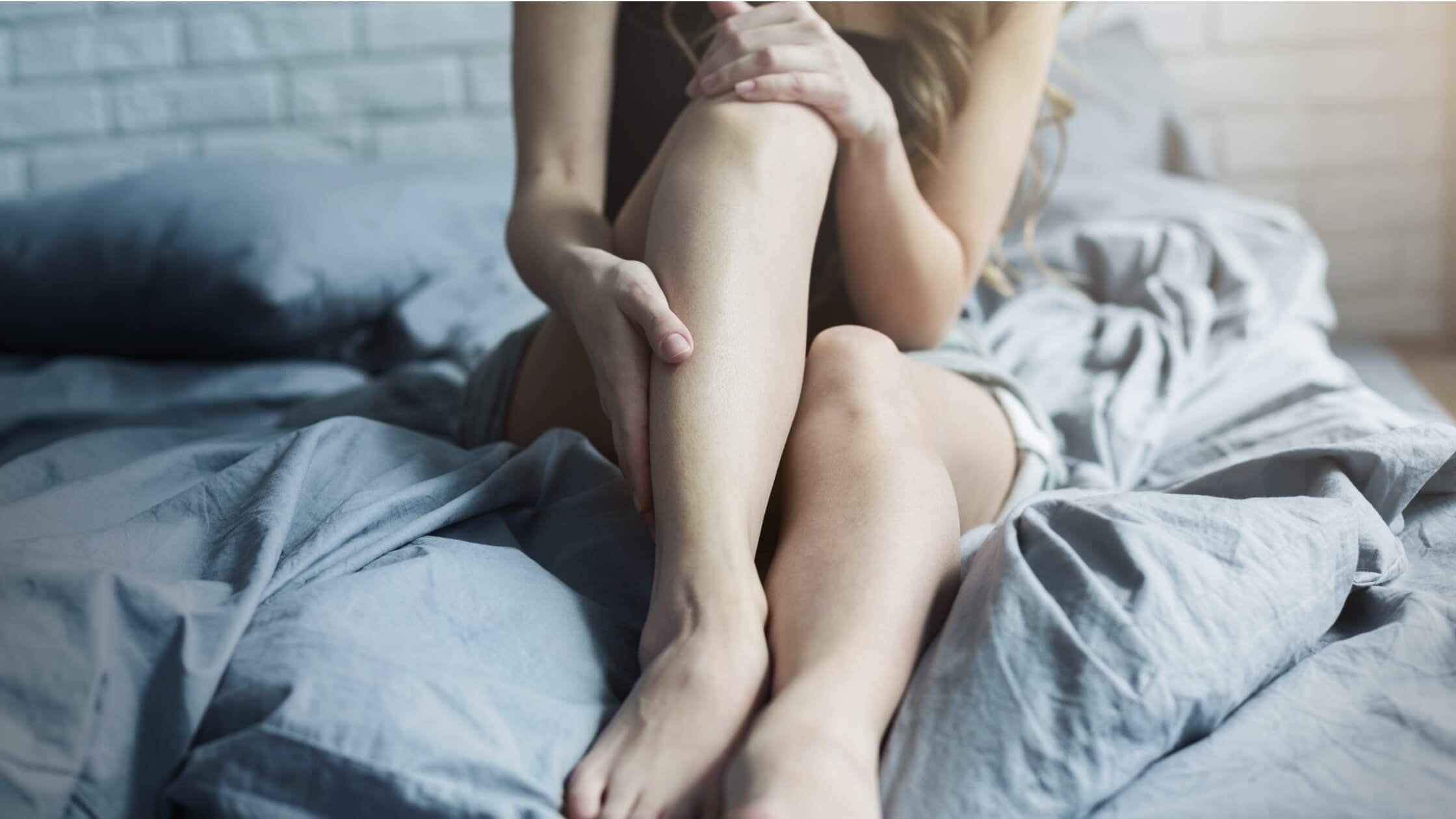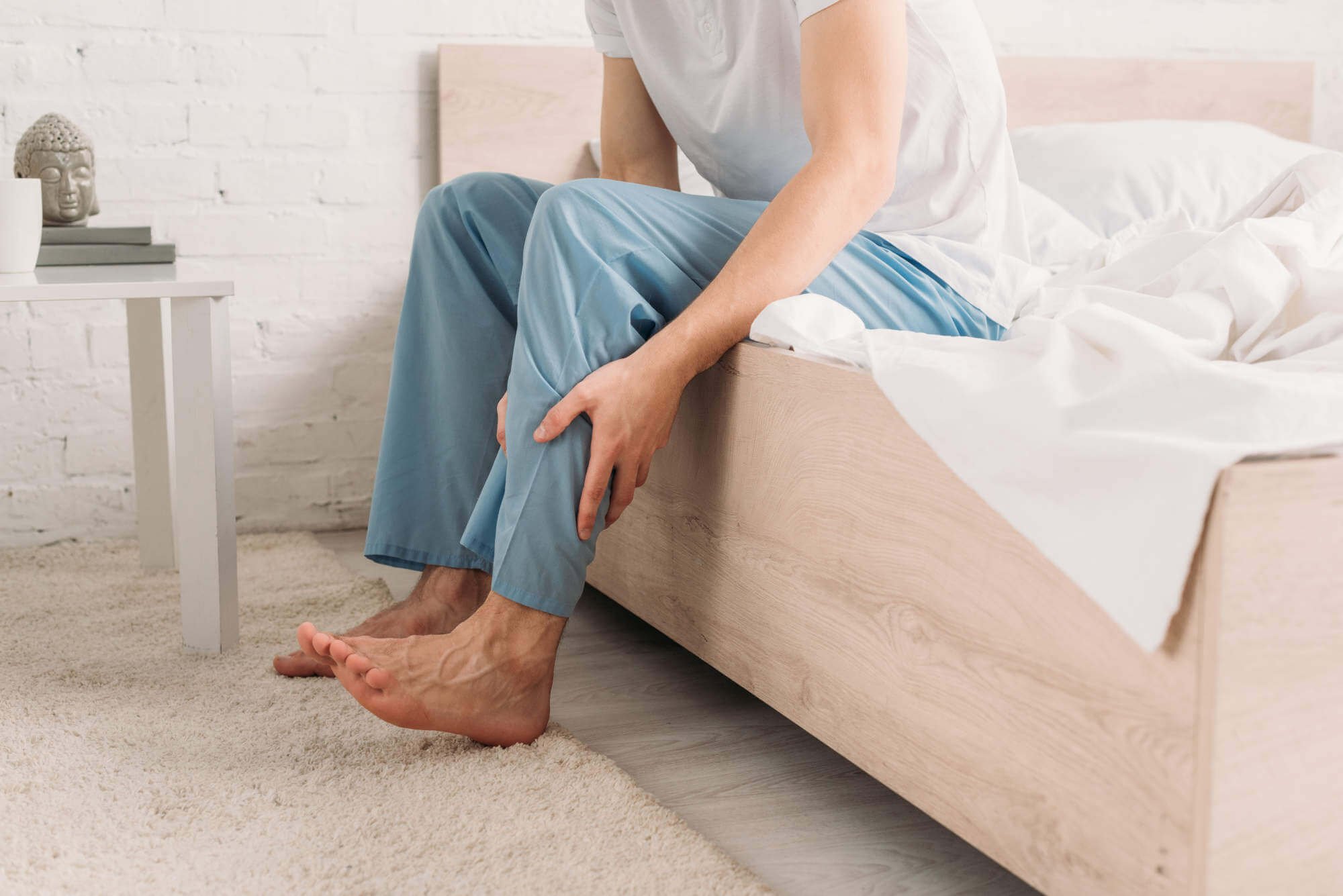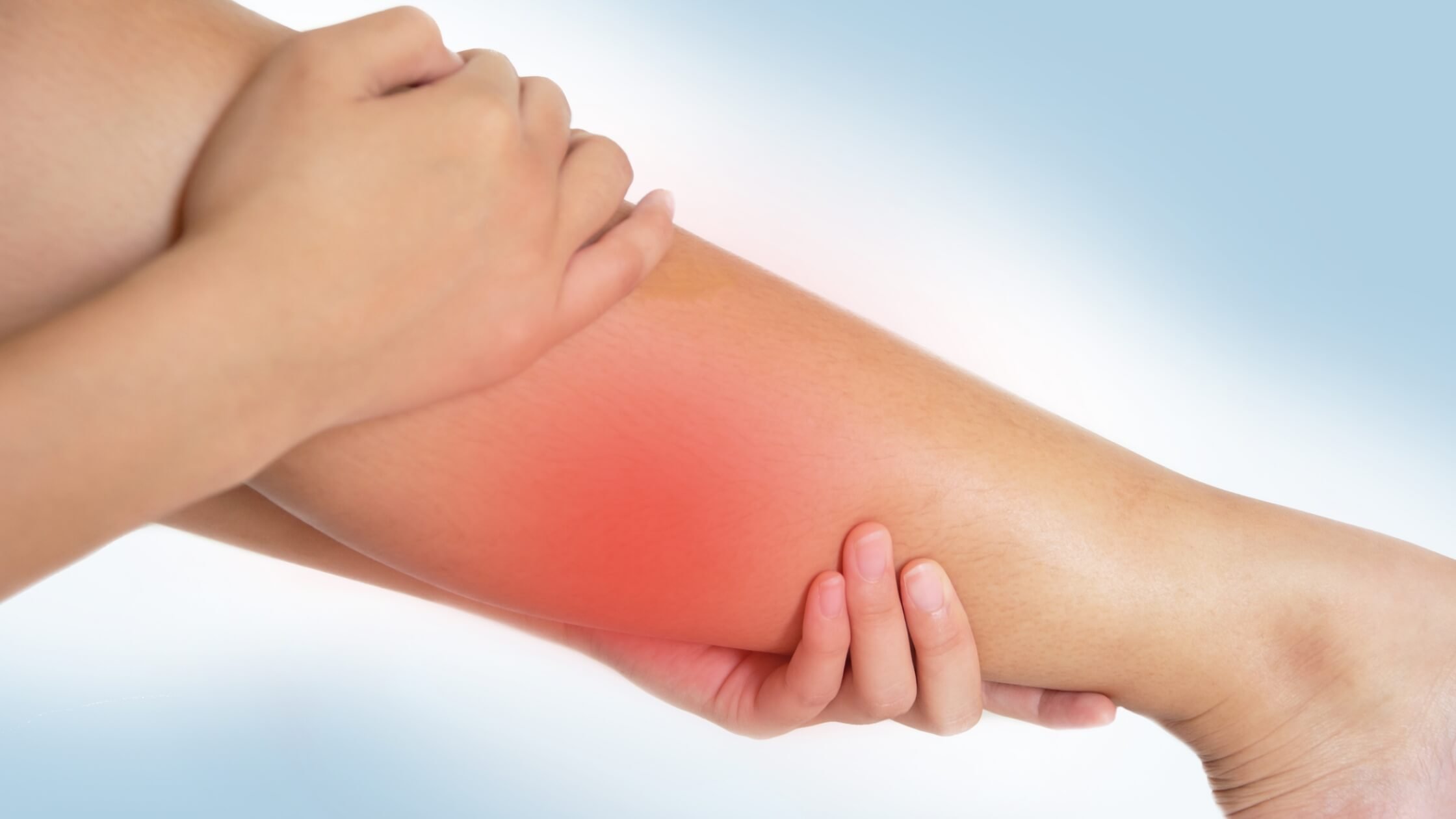
Restless Legs Syndrome (RLS)
Symptoms, Causes, Diagnosis, & More
Table of Contents Hide
What is Restless Legs Syndrome (RLS)?
Restless Legs Syndrome, which is also known as Willis-Ekbom disease, is a neurological disorder of sensation and movement (sensorimotor disorder).
The key features of Restless Legs are a strong, often overwhelming urge to move the legs, and in some case other body parts, such as the arms.
These urges often cause unpleasant sensations in the legs, and other affected body parts, that are hard to describe but the discomfort is made better by movement.
RLS is considered to be a sleep disorder because the symptoms are triggered by resting, and symptoms often get worse at night (symptoms worsen on a 24 hour pattern, known as a circadian rhythm) which can then get in the way of your ability to fall asleep.
What Are Symptoms Of Restless Legs Syndrome?
The most obvious symptom of RLS is an urge to move (known as an akathisia). Typically this is an urge to move your legs. People may also, but not always, report urges accompanied by uncomfortable sensations in their legs or affected body parts (known as dysesthesias).
The sensations are often difficult to describe but many people with RLS have said they are like tingling, crawling, a jittery feeling, a deep itch, aching, throbbing, or pins and needles. They are usually felt mostly in the thighs or calves (or both) and they will feel like they are coming from deep within the legs rather than the surface level.
Many patients with Restless Legs Syndrome describe their symptoms as painful (up to 50%).
People with RLS often report they may relieve symptoms, either in part part or fully, by movement, massage, or flexion as long as the movement or activity continues.
Symptoms vary from mild to severe.
If you experience symptoms that are mild, they may come and go on a weekly or even monthly basis. When symptoms are mild they aren't serious enough for treatment and you may mistake them for stress, tension, or restlessness.
If symptoms are more severe they can be unbearably painful and disruptive. Severe cases of RLS may make even simple activities like going to the movies or a plane trip hard. Severe symptoms can need significant medical intervention.
Symptoms almost always involve the legs first, and, then as Restless Legs progresses and symptoms worsen, arms become involved. Initial arm involvement is uncommon.
Symptoms usually happen on both sides of the body, but can alternate sides or happen on just one side of the body for a period. Symptoms that strictly happen on only one side of the body should prompt concern for a non-RLS condition.
Other key signs of Restless Legs are that symptoms occur or worsen during periods or rest or inactivity, such as lying down or sitting.
Generally, people report symptoms are worse at night or in the evening rather than during the day at first. However, as the disorder progresses, symptoms can become severe throughout the day and night.
Because symptoms happen at night, most people with Restless Legs Syndrome find they have trouble falling asleep and some people report problems staying asleep.
In a study of 133 RLS patients, 85% often experienced difficulty falling asleep at night because of Restless Legs, and 86% were frequently woken by symptoms throughout the night.
For some people, symptoms may cause severe nightly sleep disruption that can significantly impair their quality of life.
Symptoms almost always go away in the early morning. So many people who have RLS are often sleep deprived and exhausted, or have poor sleep hygiene or sleep habits as a result of managing their symptoms.. Poor sleep can harm your physical and mental health.
Recent studies have seen RLS become more recognised as also being a disorder of arousal. This is because RLS patients commonly report daytime fatigue but usually not sleepiness. And most patients report less sleepiness than expected despite often only getting 4–5 hours or less of sleep a night (Ferre et al., 2017).
Restless Legs Syndrome And Periodic Limb Movement Disorder (PLMD)
Once asleep, more than 80% of people with RLS also experience periodic limb movements of sleep, which is a separate sleep disorder involving involuntary movements of the legs during sleep (Periodic Limb Movement Disorder or PLMD). PLMD's involuntary leg movements can cause sleep disturbances such as arousals and awakenings. Although PLMD is associated with Restless legs syndrome, periodic limb movements can be distinguished because PLMD movements are simple and stereotyped.
How Do Restless Legs Syndrome Symptoms Differ From Other Sleep-Related Movement Disorders?
What makes Restless Legs really stand out from other SRMDs is that the main symptom of RLS is a conscious awareness of an abnormal sensation with a desire to move the legs which, by definition, has to occur when you are awake.
Also, unlike the other disorders of movement, movements associated with Restless Legs are typically not a simple movement like a leg jerk and usually not very stereotyped. In fact, the movements are often walking, stretching, and various other movements or counter-stimulatory activities such as rubbing and massaging.
Restless Legs is listed among the SRMDs because of:
1) the clear, standout nature of the motor/movement activity;
2) the severe sleep disturbance that it can cause, and
3) the close link to, and disruption of, behaviors that are necessary for falling asleep normally.
Who Gets Restless Legs?
Restless Legs is very common in Western countries. This is often under-appreciated by the medical community. Studies have found the prevalence of cases of Restless Legs Syndrome in the general adult population to be between 5% and 8.8%.
The disorder can occur in people of any age. However age changes the likelihood of experiencing Restless Legs, with the condition becoming more common with increasing age.
The syndrome can occur during childhood with prevalence rates of around 2% (often misdiagnosed as “growing pains” and the daytime impact as "ADHD") (Picchietti et al. 2007).
For those under the age of 30, there is a 3 % prevalence rate of Restless Legs. For people aged 30–79, the prevalence is 10 %. For people over 79 years of age, the prevalence is 19 % (Phillips B, et al. 2000)
The prevalence of Restless Legs in adults above the age of 30 years is twice as high in women as compared to men. However, this difference only happens for women who have had at least one pregnancy; otherwise, the prevalence is the same.
What Are Restless Legs Syndrome (RLS) Causes & Risk Factors?
The exact cause of RLS is not yet fully understood, but iron, dopamine, and genetics have been associated with Restless Legs.
RLS has been classified into Primary & Secondary types.
What Is Primary Restless Legs Syndrome?
A Primary Restless Legs diagnosis refers to Restless Legs symptoms with no obvious cause.
Restless Legs is often thought to have a genetic element. RLS itself has a strong genetic component, meaning that parents can pass the syndrome to their children. It is estimated that 42.3% of Restless Legs patients have definite hereditary RLS. Another 12.6 percent of people with RLS possibly have a hereditary component.
Primary Restless Legs patients more often have early onset symptoms, such as under the age of 45, and have family members with cases of RLS (more than 50 % of primary RLS cases report other family members with RLS). Patients with early onset RLS typically have a gradual worsening of symptoms over years or decades.
What Is Secondary Restless Legs Syndrome?
A Secondary Restless Legs diagnosis refers to symptoms caused by another health condition. People with secondary Restless Legs often have symptoms starting over the age of 45, and progress more quickly. Three conditions that are thought to cause Restless Legs Syndrome in adults are:
Kidney Disease
Restless Legs can occur with kidney failure. 15% to 40% of patients on dialysis for kidney disease develop RLS and this is often related to anemia and weakened iron regulation in the body. Kidney transplantation often leads to the complete cure of Restless Legs symptoms. The return of symptoms can be an early indicator of transplant failure.
Anemia
About 35% of patients with iron deficiency anemia also have RLS. Restless Legs also occurs at a slightly lower rate in patients with iron deficiency without anemia. Iron supplement treatment resolving the anemia also completely resolves the associated Restless Legs in many patients.
Pregnancy
RLS occurs in about 15% to 30% of pregnant women, mostly during the last trimester. It may reduce shortly before delivery and generally symptoms usually disappear post delivery. Iron deficiency is common during pregnancy and has been thought to cause RLS in this population.
What Are Risk Factors For Restless Legs Syndrome?
While the exact cause of Restless Legs is not fully understood, there are many risk factors that are associated with RLS developing. Some risk factors are:
Age
As noted, even children can have the condition (2%), but the prevalence increases with age. RLS symptoms typically peak in the 50s and 60s. The likelihood of experiencing RLS tends to decrease after age 70.
Female Sex
RLS is more common in women. Females are twice as likely to have RLS as males. However, this relationship is only valid for females who have had one or more pregnancies.
Living At Higher Altitudes
Studies have found Restless Legs happens more often in people living at high altitudes. One study (Gupta et al. 2017) found a fivefold increase in diagnosis (12% vs. 2.5%) among Himalayan people living at high altitudes (1,900–3,200 m) compared with those living at lower altitudes (400 m).
Lifestyle Factors
A study that followed two large groups of people found that healthy lifestyle changes reduced the occurrence of RLS (Batool-Anwar et al. 2016). People with normal weight, regular physical activity, and some alcohol intake had less risk of Restless Legs than those who were obese, did not exercise, and consumed no alcohol.
However, significant alcohol intake before bedtime most often makes symptoms worse, and vigorous exercise (as opposed to mild to moderate exercise) may trigger symptoms. Smoking increases RLS risk in women but not in men. No link has been found between RLS and heavy consumption of caffeine.
Restless Legs Syndrome & Insomnia
Adequate sleep is essential to help control Restless Legs. Sleep deprivation, often caused by RLS, results in increased daytime sleepiness and/or fatigue, which in turn increases Restless Legs symptoms, resulting in a vicious circle of worsening Restless Legs symptoms and insomnia.
How Is The Diagnosis Of Restless Legs Syndrome Performed?
There is no single medical test for RLS that can confirm or rule out the condition so diagnosis is made from the history and description of symptoms you provide and whether your symptoms meet certain diagnostic criteria. There are several rating scales that can be helpful to establish how severe your symptoms are.
Sleep studies such as polysomnography or home sleep tests, are not required to diagnose the condition unless there are signs and symptoms of other sleep disorders, such as sleep apnea.
To reach a clinical diagnosis of RLS requires that five essential features or diagnostic criteria are present and that they not better accounted for by other conditions (Allen et al. 2014b). The diagnostic for RLS are:
1. An urge to move the legs usually accompanied by, or felt to be caused by, uncomfortable and unpleasant sensations in the legs
2. The urges and unpleasant sensations are triggered or made worse by rest or inactivity, such as lying down or sitting
3. The urges and unpleasant sensations ease up when you move, such as walk or stretch, at least as long as the activity continues
4. The urges and sensations get worse in the evening or night
5. Symptoms are not solely due to another medical or behavioural problem such as a mimic (e.g., myalgia, venous stasis, leg edema, arthritis, leg cramps, positional discomfort, habitual foot tapping)
Restless Legs would be considered chronic or persistent if the symptoms, when not treated, are occurring on average at least twice weekly in the past year.
Restless Legs would be considered intermittent if the symptoms, when not treated, occur on average less than twice weekly in the past year, with at least five lifetime periods of RLS symptoms.
A few other common features of Restless Legs that can help with diagnosis are:
Periodic limb movements: the presence of periodic leg movements during sleep or resting wake at rates or intensity greater than expected for your age or medical and medication status;
Symptoms respond to treatment with dopaminergic medications: reduction in symptoms with dopaminergic treatment;
Family history: Your first-degree relatives also have Restless Legs;
Hyper-arousal: Despite not getting much sleep you don’t experience a great deal of daytime sleepiness.
Regardless of severity, Restless Legs symptoms are clinically significant, meaning they require diagnosis and treatment, if the symptoms cause significant distress or they have a big impact on your social, occupational, educational, or other important areas of life by their effect on sleep, energy and vitality, daily activities, behaviour, cognition, or mood.
Any assessment for RLS should include information about any over-the-counter and prescription medications and supplements you take. It should also cover other physical health conditions you have, and ideally should take into account your sleep and sleep-related behaviour. You may need blood tests to check for iron and other problems.
What Is The Treatment For Restless Legs Syndrome?
For those with a primary Restless Legs diagnosis there is no treatment for RLS that will "cure" the problem. Instead management of Restless Legs symptoms is the goal. This is done via medication. It is important to talk to a provider that can support you and provide up-to-date guidance on how to treat RLS as many of the traditional first-line treatments of Restless Legs Syndrome (such as dopamine agonists) reduce symptoms initially but will worsen symptoms over time in virtually all cases (known as “augmentation”).
Written By: The Better Sleep Clinic Team
Reviewed By: Dan Ford, Sleep Psychologist
Key References:
https://doi.org/10.1016/B978-0-323-24288-2.00095-7
https://doi.org/10.1016/j.smrv.2011.05.002






